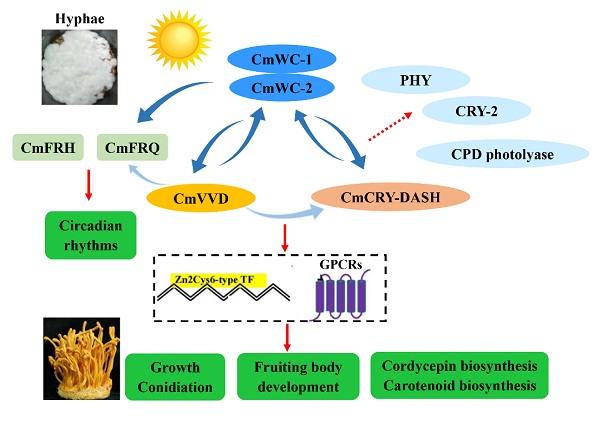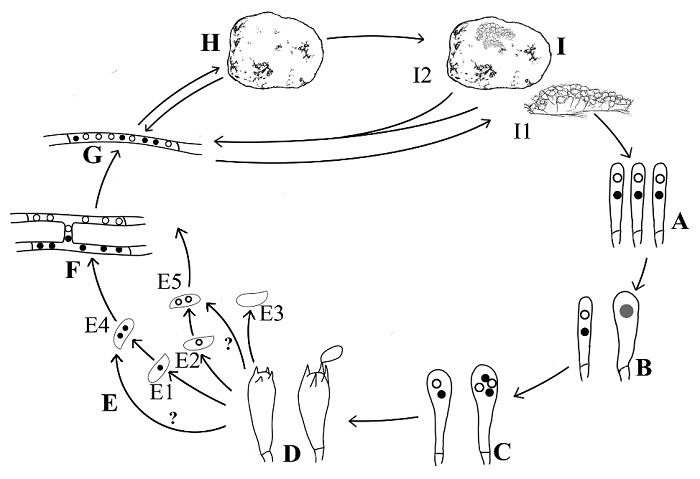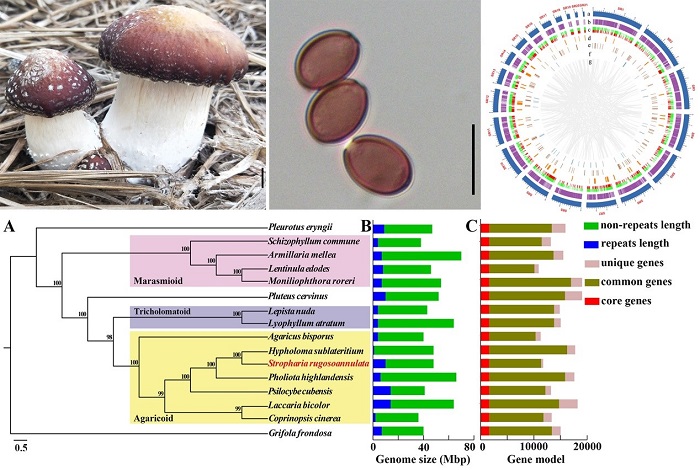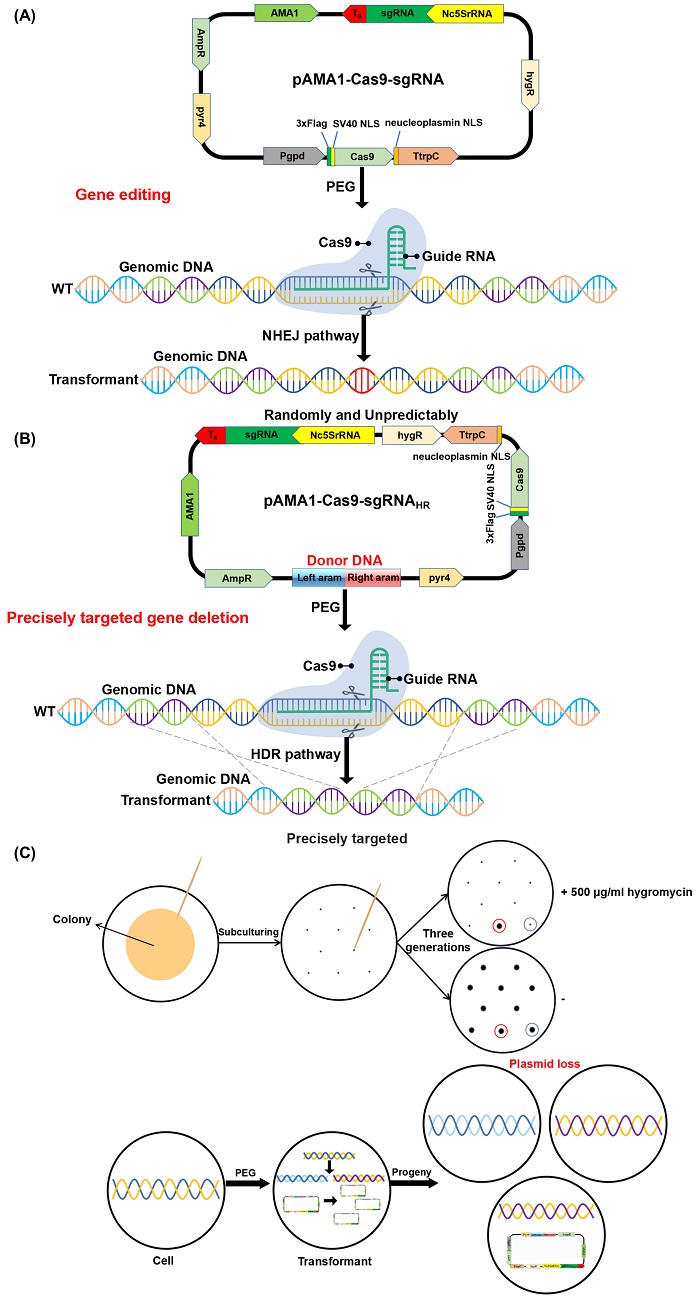Research Interests and Results
1. Fruiting body development mechanisms

2. Life cycle and reproductive mode
The reproductive mode, life cycle and substrate degradation of Wolfiporia hoelen, Stropharia rugosoannulata, Naematelia aurantialba and Ganoderma spp. were revealed through genome and transcriptome studies, combined with traditional pairing experiments and observation of production of sexual spores.

Life cycle of Wolfiporia hoelen

Genome analysis of Stropharia rugosoannulata
Li SJ, Wang Q, Dong CH*. 2022. Bipolar system of sexual incompatibility and heterothallic life cycle in the basidiomycetes Pachyma hoelen Fr. (Fuling). Mycologia. 19:1-13.
Li SJ, Wang Q, Dong CH*. 2021. Distinguishing homokaryons and heterokaryons in medicinal polypore mushroom Wolfiporia cocos (Agaricomycetes) based on cultural and genetic characteristics. Frontiers in Microbiology. 11: 596715.
Yang Y, Meng GL, Ni SJ. Zhang HF, Dong CH*. 2022. Genomic nalysis of Stropharia rugosoannulata reveals its nutritional strategy and application potential in bioremediation. J Fungi (Basel). 8:162.
Yang Y, Li CL, Ni SJ, Zhang HF, Dong CH*. 2021. Ultrastructure and development of acanthocytes, specialized cells in Stropharia rugosoannulata, revealed by scanning electron microscopy (SEM) and cryo-SEM. Mycologia. 113(1): 65-77.
3. Cross breeding, cytoplasmic breeding and gene editing breeding
The traditional cross breeding and cytoplasmic breeding of Wolfiporia hoelen, Cordyceps militaris, Morchella and Ganoderma were carried out. The strains of C. militaris and Morchella were modified by CRISPR/Cas9 technology, especially the strains with high cordycepin content in C. militaris were obtained by CRISPR/Cas9 technology.

Efficient gene edition and targeted gene deletion by AMA1-based CRISPR/Cas9 system in Cordyceps militaris



